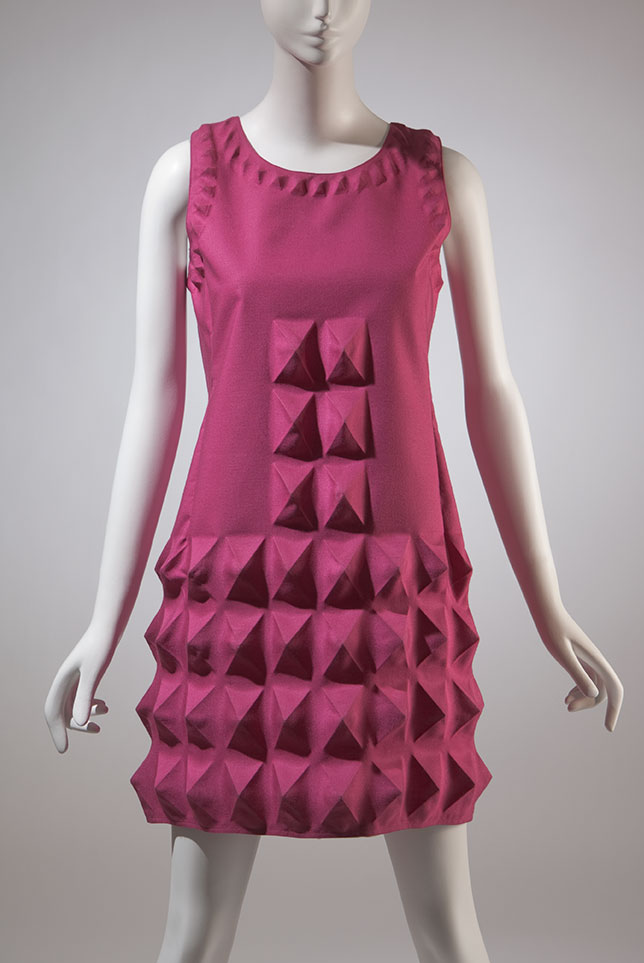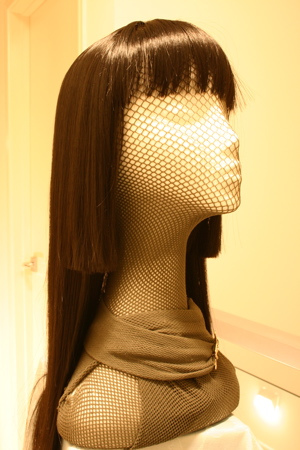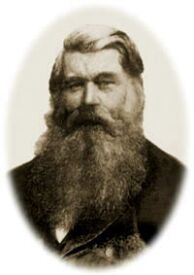|
Dynel
Dynel is a trade name for a type of synthetic fiber used in fibre reinforced plastic composite materials, especially for marine applications. As it is easily dyed, it was also used to fabricate wigs. The fashion designer Pierre Cardin used Dynel fabric (which he marketed as "Cardine") to make a collection of heat-molded dresses in 1968. A copolymer of acrylonitrile and vinyl chloride, Dynel shares many properties with both polyacrylonitrile (high Wear#Abrasive_wear, abrasion resistance, good tensile strength) and polyvinyl chloride, PVC (flame resistance). It is an Polymethyl methacrylate, acrylic resin. Dynel was originally produced by Union Carbide corporation. References {{reflist Synthetic fibers Wigs Acrylate polymers Copolymers ... [...More Info...] [...Related Items...] OR: [Wikipedia] [Google] [Baidu] |
1968 Pierre Cardin Dress, Pink Heat Moulded Dynel
The year was highlighted by Protests of 1968, protests and other unrests that occurred worldwide. Events January–February * January 5 – "Prague Spring": Alexander Dubček is chosen as leader of the Communist Party of Czechoslovakia. * January 10 – John Gorton is sworn in as 19th Prime Minister of Australia, taking over from John McEwen after being 1968 Liberal Party of Australia leadership election, elected leader of the Liberal Party of Australia, Liberal Party the previous day, following the disappearance of Harold Holt. Gorton becomes the only Australian Senate, Senator to become Prime Minister, though he immediately transfers to the Australian House of Representatives, House of Representatives through the 1968 Higgins by-election in Holt's vacant seat. * January 15 – The 1968 Belice earthquake in Sicily kills 380 and injures around 1,000. * January 21 ** Vietnam War: Battle of Khe Sanh – One of the most publicized and controversial battles of the war ... [...More Info...] [...Related Items...] OR: [Wikipedia] [Google] [Baidu] |
Vinyl Chloride
Vinyl chloride is an organochloride with the formula H2C=CHCl. It is also called vinyl chloride monomer (VCM) or chloroethene. This colorless compound is an important industrial chemical chiefly used to produce the polymer polyvinyl chloride (PVC). About 13 million metric tonne are produced annually. VCM is among the top twenty largest petrochemicals (petroleum-derived chemicals) in world production. The United States currently remains the largest VCM manufacturing region because of its low-production-cost position in chlorine and ethylene raw materials. China is also a large manufacturer and one of the largest consumers of VCM. Vinyl chloride is a gas with a sweet odor. It is highly toxic, flammable, and carcinogenic. It can be formed in the environment when soil organisms break down chlorinated solvents. Vinyl chloride that is released by industries or formed by the breakdown of other chlorinated chemicals can enter the air and drinking water supplies. Vinyl chloride is a common ... [...More Info...] [...Related Items...] OR: [Wikipedia] [Google] [Baidu] |
Wigs
A wig is a head or hair accessory made from human hair, animal hair, or synthetic fiber. The word wig is short for periwig, which makes its earliest known appearance in the English language in William Shakespeare's ''The Two Gentlemen of Verona''. Some people wear wigs to disguise baldness; a wig may be used as a less intrusive and less expensive alternative to medical therapies for restoring hair or for a religious reason. History Ancient and medieval use In Egyptian society men and women commonly had clean shaven or close cropped hair and often wore wigs. The ancient Egyptians created the wig to shield shaved, hairless heads from the sun. They also wore the wigs on top of their hair using beeswax and resin to keep the wigs in place. Wealthy Egyptians would wear elaborate wigs and scented head cones of animal fat on top of their wigs. Other ancient cultures, including the Assyrians, Phoenicians, Jews in ancient Israel, Greeks and Romans, also used wigs as an everyday fashion. ... [...More Info...] [...Related Items...] OR: [Wikipedia] [Google] [Baidu] |
Synthetic Fibers
Synthetic fibers or synthetic fibres (in British English; see spelling differences) are fibers made by humans through chemical synthesis, as opposed to natural fibers that are directly derived from living organisms, such as plants (like cotton) or fur from animals. They are the result of extensive research by scientists to replicate naturally occurring animal and plant fibers. In general, synthetic fibers are created by extruding fiber-forming materials through spinnerets, forming a fiber. These are called synthetic or artificial fibers. The word polymer comes from a Greek prefix "poly" which means "many" and suffix "mer" which means "single units". (Note: each single unit of a polymer is called a monomer). Early experiments The first fully synthetic fiber was glass. Joseph Swan invented one of the first artificial fibers in the early 1880s; today it would be called semisynthetic in precise usage. His fiber was drawn from a cellulose liquid, formed by chemically modifying ... [...More Info...] [...Related Items...] OR: [Wikipedia] [Google] [Baidu] |
Union Carbide
Union Carbide Corporation is an American chemical corporation wholly owned subsidiary (since February 6, 2001) by Dow Chemical Company. Union Carbide produces chemicals and polymers that undergo one or more further conversions by customers before reaching consumers. Some are high-volume commodities and others are specialty products meeting the needs of smaller markets. Markets served include paints and coatings, packaging, wire and cable, household products, personal care, pharmaceuticals, automotive, textiles, agriculture, and oil and gas. The company is a former component of the Dow Jones Industrial Average. Founded in 1917 as the Union Carbide and Carbon Corporation, from a merger with National Carbon Company, the company's researchers developed an economical way to make ethylene from natural gas liquids, such as ethane and propane, giving birth to the modern petrochemical industry. The company divested consumer products businesses Eveready and Energizer batteries, Glad bags ... [...More Info...] [...Related Items...] OR: [Wikipedia] [Google] [Baidu] |
Polymethyl Methacrylate
Poly(methyl methacrylate) (PMMA) belongs to a group of materials called engineering plastics. It is a transparent thermoplastic. PMMA is also known as acrylic, acrylic glass, as well as by the trade names and brands Crylux, Plexiglas, Acrylite, Astariglas, Lucite, Perclax, and Perspex, among several others ( see below). This plastic is often used in sheet form as a lightweight or shatter-resistant alternative to glass. It can also be used as a casting resin, in inks and coatings, and for many other purposes. Although not a type of familiar silica-based glass, the substance, like many thermoplastics, is often technically classified as a type of glass, in that it is a non-crystalline vitreous substance—hence its occasional historic designation as ''acrylic glass''. Chemically, it is the synthetic polymer of methyl methacrylate. It was developed in 1928 in several different laboratories by many chemists, such as William Chalmers, Otto Röhm, and Walter Bauer, and first brought t ... [...More Info...] [...Related Items...] OR: [Wikipedia] [Google] [Baidu] |
Tensile Strength
Ultimate tensile strength (UTS), often shortened to tensile strength (TS), ultimate strength, or F_\text within equations, is the maximum stress that a material can withstand while being stretched or pulled before breaking. In brittle materials the ultimate tensile strength is close to the yield point, whereas in ductile materials the ultimate tensile strength can be higher. The ultimate tensile strength is usually found by performing a tensile test and recording the engineering stress versus strain. The highest point of the stress–strain curve is the ultimate tensile strength and has units of stress. The equivalent point for the case of compression, instead of tension, is called the compressive strength. Tensile strengths are rarely of any consequence in the design of ductile members, but they are important with brittle members. They are tabulated for common materials such as alloys, composite materials, ceramics, plastics, and wood. Definition The ultimate tensile streng ... [...More Info...] [...Related Items...] OR: [Wikipedia] [Google] [Baidu] |
Wear
Wear is the damaging, gradual removal or deformation of material at solid surfaces. Causes of wear can be mechanical (e.g., erosion) or chemical (e.g., corrosion). The study of wear and related processes is referred to as tribology. Wear in machine elements, together with other processes such as fatigue and creep, causes functional surfaces to degrade, eventually leading to material failure or loss of functionality. Thus, wear has large economic relevance as first outlined in the Jost Report. Abrasive wear alone has been estimated to cost 1-4% of the gross national product of industrialized nations. Wear of metals occurs by plastic displacement of surface and near-surface material and by detachment of particles that form wear debris. The particle size may vary from millimeters to nanometers. This process may occur by contact with other metals, nonmetallic solids, flowing liquids, solid particles or liquid droplets entrained in flowing gasses. The wear rate is affected by f ... [...More Info...] [...Related Items...] OR: [Wikipedia] [Google] [Baidu] |
Polyacrylonitrile
Polyacrylonitrile (PAN), also known as polyvinyl cyanide and Creslan 61, is a synthetic, semicrystalline organic polymer resin, with the linear formula (C3H3N)n. Though it is thermoplastic, it does not melt under normal conditions. It degrades before melting. It melts above 300 °C if the heating rates are 50 degrees per minute or above. Almost all PAN resins are copolymers made from mixtures of monomers with acrylonitrile as the main monomer. It is a versatile polymer used to produce large variety of products including ultra filtration membranes, hollow fibers for reverse osmosis, fibers for textiles, and oxidized PAN fibers. PAN fibers are the chemical precursor of very high-quality carbon fiber. PAN is first thermally oxidized in air at 230 °C to form an oxidized PAN fiber and then carbonized above 1000 °C in inert atmosphere to make carbon fibers found in a variety of both high-tech and common daily applications such as civil and military aircraft primary and ... [...More Info...] [...Related Items...] OR: [Wikipedia] [Google] [Baidu] |
Acrylonitrile
Acrylonitrile is an organic compound with the formula and the structure . It is a colorless, volatile liquid although commercial samples can be yellow due to impurities. It has a pungent odor of garlic or onions. In terms of its molecular structure, it consists of a vinyl group () linked to a nitrile (). It is an important monomer for the manufacture of useful plastics such as polyacrylonitrile. It is reactive and toxic at low doses. Acrylonitrile was first synthesized by the French chemist Charles Moureu (1863–1929) in 1893. Occurrence Acrylonitrile is not naturally formed on Earth. It has been detected at the sub-ppm level at industrial sites. It persists in the air for up to a week. It decomposes by reacting with oxygen and hydroxyl radical to form formyl cyanide and formaldehyde. Acrylonitrile is harmful to aquatic life. Acrylonitrile has been detected in the atmosphere of Titan, a moon of Saturn. Computer simulations suggest that on Titan conditions exist ... [...More Info...] [...Related Items...] OR: [Wikipedia] [Google] [Baidu] |
Trade Name
A trade name, trading name, or business name, is a pseudonym used by companies that do not operate under their registered company name. The term for this type of alternative name is a "fictitious" business name. Registering the fictitious name with a relevant government body is often required. In a number of countries, the phrase "trading as" (abbreviated to t/a) is used to designate a trade name. In the United States, the phrase "doing business as" (abbreviated to DBA, dba, d.b.a., or d/b/a) is used, among others, such as assumed business name or fictitious business name. In Canada, "operating as" (abbreviated to o/a) and "trading as" are used, although "doing business as" is also sometimes used. A company typically uses a trade name to conduct business using a simpler name rather than using their formal and often lengthier name. Trade names are also used when a preferred name cannot be registered, often because it may already be registered or is too similar to a name that is a ... [...More Info...] [...Related Items...] OR: [Wikipedia] [Google] [Baidu] |







